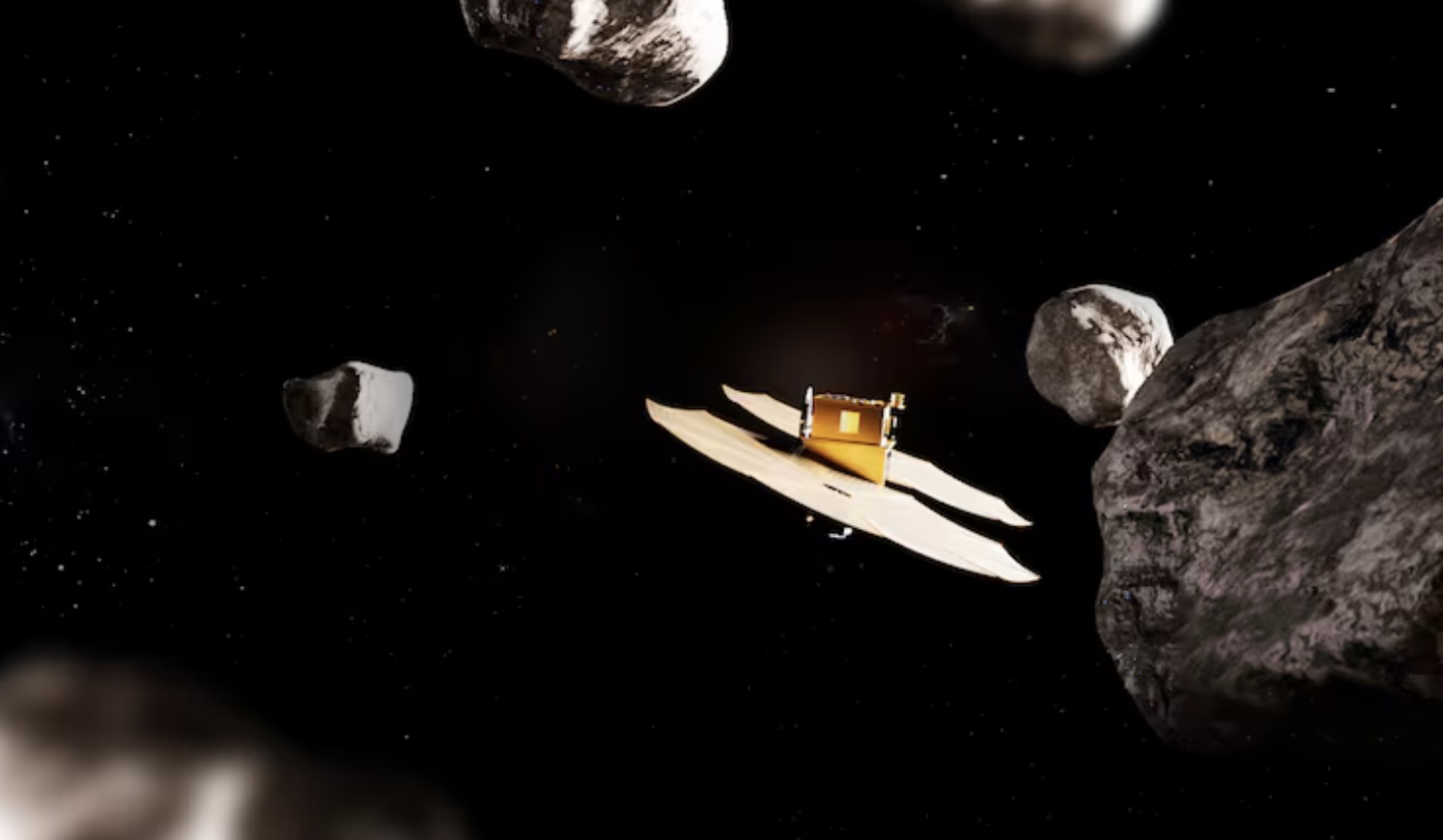10.10.2024
'Another milestone in our space journey': UAE’s asteroid belt mission moves step closer to lift-off
Sheikh Hamdan witnesses agreement that will help enable the launch of the Mohammed bin Rashid Explorer spacecraft in 2028

A rendering of the Mohammed bin Rashid Explorer, which is set for launch in 2028. Wam
A UAE mission to travel to the asteroid belt reached a milestone on Wednesday, when an agreement was signed to provide services for the 2028 launch of the Mohammed Bin Rashid Explorer spacecraft.
The signing of the deal by the UAE Space Agency and Japanese multinational Mitsubishi Heavy Industries was attended by Sheikh Hamdan bin Mohammed, Crown Prince of Dubai, Deputy Prime Minister and Minister of Defence, and chairman of the Supreme Space Council.
“The UAE's mission to explore Venus and the asteroid belt marks another significant milestone in our space exploration journey, driven by the talent and dedication of Emiratis,” Sheikh Hamdan said.
“Our visionary leadership has continuously invested in developing national capabilities, empowering them with the knowledge and skills required for the UAE to continue advancing its successful journey in the space sector.”
He also described the agreement as a strategic step in strengthening the UAE’s standing in the global space sector, adding that it reflects “our ambition to build a future rooted in innovation and knowledge for generations to come”.
“The space sector is a gateway to the future, and investing in it reinforces the UAE's leadership in science and technology,” he added.

What is the asteroid belt mission?
The mission, set for launch in early 2028, will see the Mohammed Bin Rashid Explorer perform close fly-pasts of six asteroids to gather data before landing on the seventh asteroid, Justitia.
It will amount to a 13-year journey over five billion kilometres, with six years dedicated to spacecraft development and seven years for exploring the main asteroid belt between Mars and Jupiter.
Gravity-assisted manoeuvres from Venus, Earth, and Mars will optimise its trajectory for the fly-by campaign, while the first asteroid encounter is expected in February 2030.
The spacecraft will carry four advanced scientific instruments, including a visible camera, a medium-wave infrared spectrometer, a thermal infrared spectrometer, and an infrared camera.
These will measure the surface composition, geology, internal density, temperatures and thermophysical properties of many asteroids to assess the stages of their surface evolution and history and to better identify their water-rich origins.
Academic and hardware development partners are contributing to the mission, including Khalifa University, New York University Abu Dhabi, and the National Space Science and Technology Centre at UAE University.
Sheikh Hamdan also met Hiroshi Yamakawa, president of the Japan Aerospace Exploration Agency. Mr Yamakawa emphasised the importance of strengthening bilateral co-operation, working towards shared international space exploration goals, and promoting sustainability in space activities.
Ahmed Al Falasi, Minister of Sports and Chairman of the UAE Space Agency, said the agreement with Mitsubishi Heavy Industries represents a milestone in the UAE’s deep space exploration journey.
The Mohammed bin Rashid Explorer – in picture

Quelle: The National
